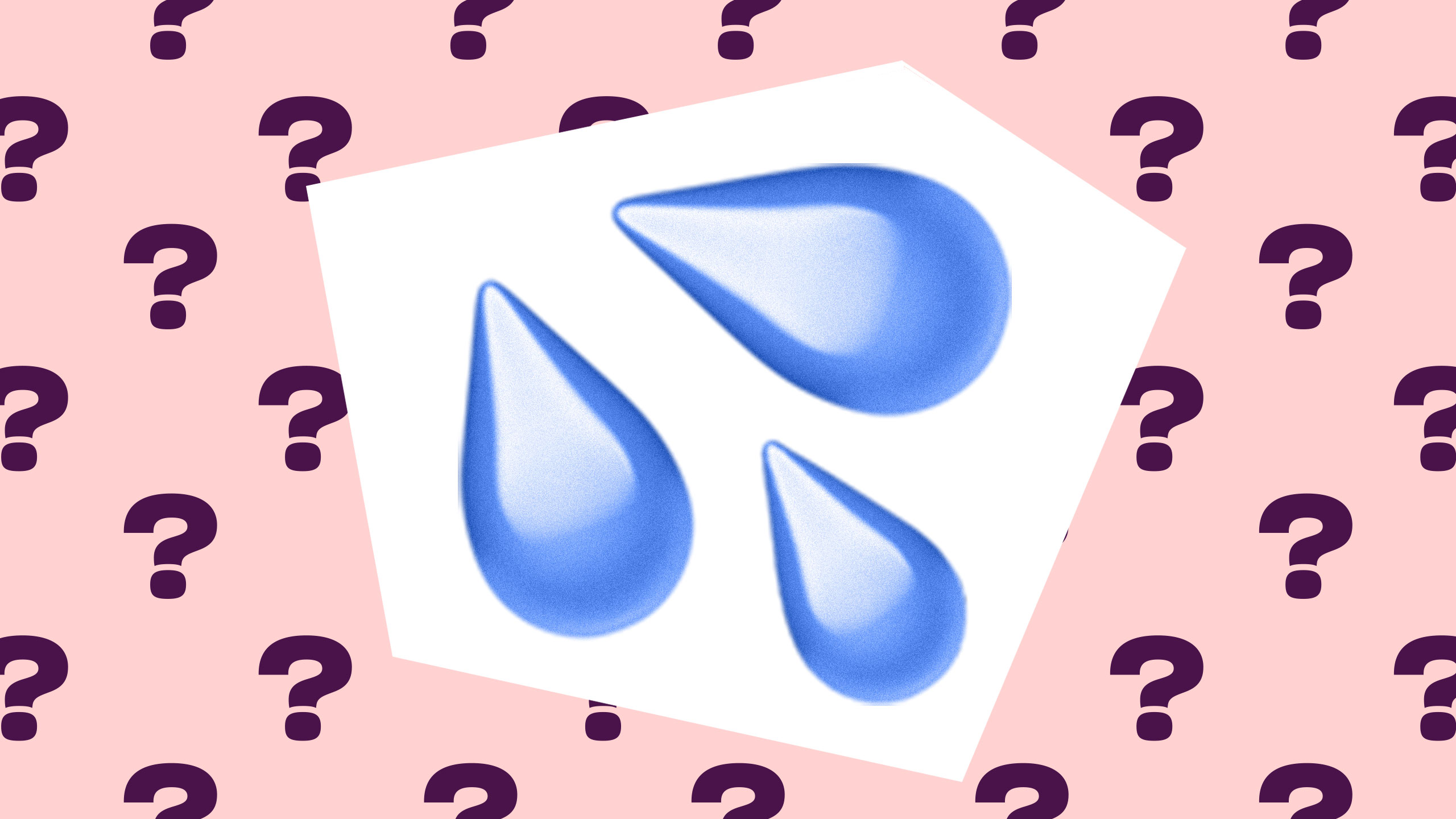Conversations around squirting—also known as “female” ejaculation—became more common in the eighties, as sex-positive feminism encouraged women to reclaim their pleasure and explore all the possibilities their bodies offered. Tied in with the mysterious G-spot, squirting was touted as providing the most amazing orgasms ever, with the added bonus of visual confirmation: a geyser of bodily fluid, enough to soak the bedsheets, your lover and possibly the wall and floors too.
Today, “squirting” is a common search term on porn sites, and you can buy waterproof blankets at most good sex shops to help contain the mess. Squirting has gone, er, mainstream! But since it’s still a vastly under-researched topic, questions persist: Where does the fluid come from? Is it just pee? If you have a vulva and haven’t figured out how to ejaculate, are you missing out?
To get some answers, I spoke with Lola Jean, a New York-based sex educator, mental health professional, wrestler, pro domme and world record-holder for volume squirting (solo). Jean teaches a popular class on squirting and has a five-part video series for folks who’d like to learn more about it. She plans to start a community forum for squirters in the coming months.
How would you define or explain squirting?
During a feeling of sexual pleasure, liquid can be exuded from the genital region. I think a common misconception is that it has to project, but sometimes it can trickle, fall or gush. Not necessarily during orgasm, though it can happen then; it can happen frequently or infrequently. If it feels good and there’s a good amount of liquid coming out of your body, it’s probably squirt.
One of the things I find really troubling about most of the existing literature on squirting—similar to a lot of sex how-to stuff in general—is the super binary language about bodies, body parts and the genders they are assumed to go with. There’s also so much out there about squirting being “inherently feminine,” associated with goddess worship and so on. How do you handle this in your teaching?
I really just focus on it from an anatomy perspective. I use really clinical terminology—I do that even in my sex life, which can annoy people! Even if you identify as a cis woman, you may not want to interact with your genitals that way, so just call the bits what they are. Some people really squick at the word pussy, or they want to call their parts “cunt.” Whatever it is, it’s not wise to assume those things. I will vomit if you call my bits a “yoni.” I don’t want to do that with people, so using anatomical terms just gets more specific. Are we talking about the vagina, the vulva, the clitoris? It’s not that hard to just say “people who have vulvas” or “people with penises” or “people who squirt.” It can be really affirming to people who don’t identify as female because they are able to have that experience which is typically associated with masculinity. People call it female ejaculate, but we can just call it ejaculate or squirt.
Can we get a tour of the anatomy involved in squirting?
All of our sex organs come from the same place in the embryo, so we all have the same parts, just kind of in different formats. The thing that’s confusing is that the prostate on someone with a penis is an object, you can see it on an ultrasound. In someone with a vulva, the glands are more spread out through erectile tissue; it’s not a single spot. There’s an area that interacts with the internal clitoris, so there’s a lot going on.
There are different theories of where the squirt is coming from.
Yes, I know some common ones are that it’s just excessive vaginal lubrication, that it’s pee coming out in the usual way or that it’s fluid secreted in the engorged tissues around the urethral canal.
I believe that it’s coming both from the urethra, via the bladder, as well as the Skene’s glands or paraurethral glands which surround the urethra. Visually speaking, they’re so close together it’s impossible to tell. We know there’s prostate-specific antigen in the fluid, which comes from the Skene’s glands, but there’s no way those glands alone could secrete that much.
I guess that’s where the assumption that squirt and pee are the same thing comes from. What’s your take on the pee question?
I’m tired of it. I think the people who are asking it are asking it to prove a point. What I usually say is: squirt is squirt. Otherwise we’d call it sexy pee. I know the difference because I pee on people and squirt on them, and I can squirt a lot and still have a lot of pee in there. If someone wants to argue about it, they can do it into the void. I think people just want to argue that it’s pee. I don’t know what their stake in it is. If they want to take me off my throne, I don’t know what there is to gain from that.
Research is a white man’s game, and a lot of it unfortunately isn’t reliable (and there’s no funding behind it unless it’s for boner pills). A lot of the research done about squirting is too small to be significant.
What’s great about squirting? Why would someone want to do it?
I don’t know, man! I think squirting is overrated. I love it, I love how it feels, but I hate it sometimes. It has its novelty in the first couple of years, but then it gets old. It’s just how my body expresses itself, it’s just how my body works. A lot of people doing it for the first time are the loudest, saying how great it is, but I say talk to me in two years.
I’m guessing that’s because dealing with sometimes large quantities of expelled fluid can involve a lot of logistics. And laundry.
Yes. There are ways of dealing with the mess, but when you produce as much as I do, it can get really frustrating. I like to use a puppy pad; when I fill it up, I grab another one, and by the time I’m on the third I can be like, I give up. Even if someone thinks squirting is the hottest thing in the world, people get upset about a mess. It’s both fetishized and shamed, it can be very dividing.
And it can detract from my orgasm, too. I think they’re separate. It can take me four seconds to squirt, but an orgasm can take me longer. I think it can be confusing for people who associate them with each other.
Squirting can be so tied to people’s egos. With the sensationalism of porn and the idea of it leveling the playing field, it’s heralded as hot and sexy, and so desirability drives people rather than pleasure. Squirting should feel like an equalizer for people with vulvas, but unfortunately I think it has become just another party trick for people with vulvas to do to please men, not about pleasure. It’s been more for the satisfaction of men, seen as an extension of what they can achieve sexually. I think that as someone who really just got away from the need to be desirable and palatable for men, the idea that so many men feel it’s all about them—ugh. I don’t care what you think is hot, I really don’t.
Let’s get back to pleasure, then. How does squirting feel?
It feels like when you have an itch you can’t reach, and then you finally scratch it. Or when you have a sneeze building up and you finally sneeze. Like you’re at the top of the roller coaster right before you go down. It feels very much like a relief washes over your whole body. But like any orgasm, some are like an earthquake and some are like a hiccup. It depends a lot on the buildup.
If someone wants to learn how to squirt, is there anything they should know before they begin?
I take a real hands-off approach: it’s gonna happen on your own time, so don’t pressure yourself. The way everybody squirts is gonna be different, there’s not just one technique. One large assumption is that there needs to be some kind of internal stimulation or penetration, but that can be too much for some people. I want the conversation to include solo squirting and non-penetrative squirting. It doesn’t have to involve anyone else. If you’ve squirted once, then that’s your body, you are capable. From there, it’s trial and error, figuring out how to stimulate yourself externally and internally with your pelvic floor muscles.
How can someone learn to squirt?
Always, before you learn, ask yourself why it is you want to. Make sure it’s for you and not for someone else.
Three states of the pelvic floor come into play in squirting: elongation, contraction and relaxation. Do things you really like while you play with those muscle movements. I figured this out just trying to replicate the sensation on my own.
I recommend putting your finger inside to feel the difference between contraction and elongation. Think of it like an elevator or lift: pull it up and push it down. It’s not the same as pushing like you’re peeing, but when you engage your pelvic floor, if you squeeze one, you squeeze them all. [The pelvic floor muscles form] a bowl that sits in your pelvis. We should have that awareness of our muscles. Once you get used to that, you don’t need your finger inside. The contraction should feel good, as it’s engaging your G-area and clit internally. The elongation should also feel good, and it’s a key part of the expulsion process. Elongation is what you’re doing during the squirting, voluntarily or involuntarily.
People focus on contraction but that can lead to dysfunction.
Right, excess muscle tension doesn’t feel good anywhere, but certainly not in your pelvis, especially because those internal muscles relate to everything from period cramps to lower back pain.
That’s right. So don’t just focus on the strengthening bit. You don’t have to have a pelvic floor of a certain strength or elasticity to squirt, so let’s get away from the Kegel fascination. What you need is more like pelvic floor awareness. It gives you a lot more control over your pleasure and a lot more say in it. You can make anything you’re doing feel better on your own.
The main step in squirting is engorgement and expulsion. So the G-area needs to be engorged with fluid so that it can be released. You can do this by playing with the muscle groups. The expulsion is the splash. You just gotta figure out how to let it out of your body, which can be hard for people who are used to trying to keep it all inside. Sometimes it’s involuntary body movements. But sometimes you have to do [it on purpose through elongation].
Someone else can be in charge of the engorgement and help you with a lot of the pleasure, but you’re still in charge of your body’s involvement. Partners: you don’t make anyone squirt or orgasm. You can have a very large role in that process, but you assist them in it. You have to get this idea: you’re helping, but it’s their body.
What are the common pitfalls, mistakes or problems people encounter when squirting or learning to squirt?
Bodily embarrassment. Being concerned that you’re peeing, or if you queef [a farting sound from the vagina] or fart because of moving the pelvic floor—especially if you’re putting stuff in your vagina that can trap air in there, it’s a recipe for queefing. This is why I recommend learning on your own. Embarrassment is the biggest thing that holds people back.
If you haven’t experienced that feeling of ejaculating it can be scary, you don’t know what else your body’s going to do.
Another thing is people focus on squirting being the goal, and if it isn’t happening, they go harder, faster, stronger. But it’s ultimately the person doing the squirting who has to let it out of their body. So try something else.
I think there are a lot of pleasurable experiences that you can have other than squirting. Focus on what your body can do rather than what it can’t.
Is it safe to swallow squirt, or to squirt into someone’s vagina, front hole or asshole?
Yeah, absolutely. With any kind of sexual fluid, you have to assume risks. That’s up to you, if you want to do it. If you are consuming squirt, you’re likely consuming the sexual fluids around the squirt too, which comes with a risk of transmitting STIs. So use your best judgement. Also be cautious of trace amounts of medications anytime you’re swallowing fluids that have come through a person’s body. Into a vagina, it’s acidic, so that should be fine. I would have to get back to you about a butthole, but I know some filthy people out there—I say that in the best way—who do enemas with a lot of different fluids, including pee and squirt. A lot of things can be done safely, but carry the same risk questions as with swallowing.
Okay, last question: How did you earn a world record for volume squirting?
I worked with a researcher who said the maximum amount a person could squirt was 800 to 900 millilitres, and I said I thought I could crush that. I knew I could produce a large volume, I have a lot of control and awareness of it. So I applied to Guinness. But they don’t do sexual records. After I got the rejection, a friend said I should use it as a PR stunt and do my own event. You have to have enough witnesses and journalists and you do it to certain standards, so I did it within a one-minute period, using no toys and no partners, just my hand. I squirted 1,250 millilitres in 25 seconds. I like to say that I would welcome competition, but a lot of people are all talk and no action.


 Why you can trust Xtra
Why you can trust Xtra
